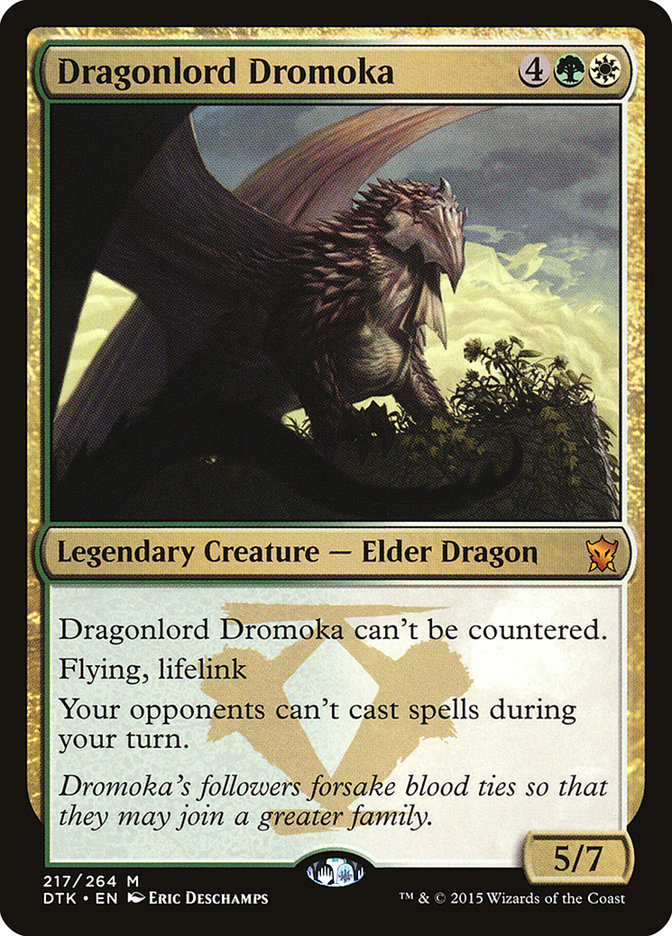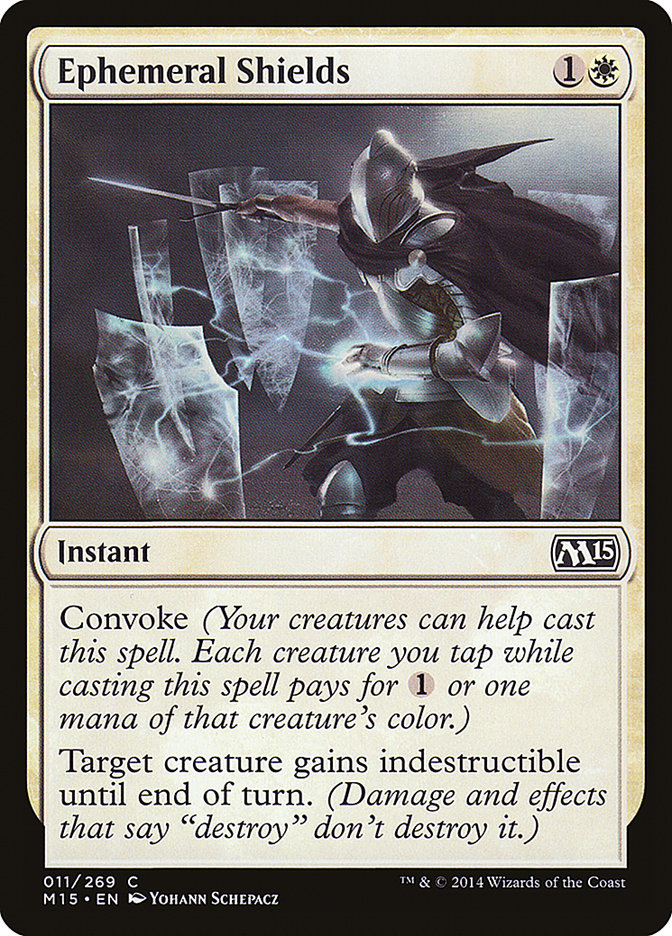I’d been pondering what to write about this week. My first instinct was to write about the Standard and Legacy decks I’ve be working on for the Starcitygames.com Invitational and Open, but to be honest those decklists are still in flux down to the last minute due to Dragons of Tarkir releasing the day of the Invitational and the fact that I’m still working on acquiring the cards I need. Also, who knows what last minute technology might break for the new format between when I write this column and when it’s posted? I’m planning on recapping the weekend on Friday, so I’ll just hold off and write about the decks as I actually play them and hopefully have some useful ideas for you that have been battle tested. If you want to know what I ended up playing before then, check out my my Twitter and Facebook pages in the meantime!
So, what should I write about? I do have a sweet Bant Dragons build for Standard I’m looking to try out in the near future I could share (and if you’re interested, be sure to check out the bottom of this column) but…
Monday night the Commander Rules Committee posted their quarterly update to the official banned list and rules… and social media blew the hell up. Here’s what Sheldon Menery wrote if you haven’t seen it already:
- Hang onto your hats: we’re changing how tuck works for commanders.
- If your commander would go into the library or your hand, you may choose to put it into the command zone. It’s as simple as that. Just like with the graveyard, if you want it to go into the library/hand, you’re more than welcome to let it. Note that this a replacement effect.
- There are four major points in how we arrived at this decision. None of them individually was the silver bullet; the combination of factors got us to where we ended up. In no particular order:
- We want to engender as positive an experience as we can for players. Nothing runs the feel-bads worse than having your commander unavailable to you for the whole game.
- The presence of tuck encourages players to play more tutors so that in case their commander gets sent to the library, they can get it back — exactly the opposite of what we want (namely, discouraging the over-representation of tutors).
- While we are keenly aware that tuck is a great weapon against problematic commanders, the tools to do so are available only in blue and white, potentially forcing players into feeling like they need to play those colors in order to survive. We prefer as diverse a field as possible.
- It clears up some corner case rules awkwardness, mostly dealing with knowing the commander’s location in the library (since highly unlikely to actually end up there).
- When Fare Reforged came out, manifest led us to talking about what it meant to be a commander — which is what got us talking about tuck in the first place. After a long discussion, we decided the best course regarding commander-ness was no change. Your commander is always your commander regardless of where it is or its status. That means enough hits from a face-down commander can kill you.
Sheldon dove deeper into this decision in his column last week, and I’d recommend all Commander fans be sure to check that out. It’ll no doubt provide more insight into the thinking of the Rules Committee as they continue to lovingly shepherd this fantastic format through the years.
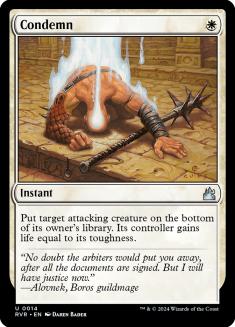
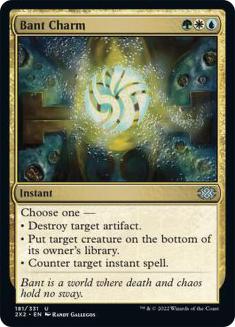
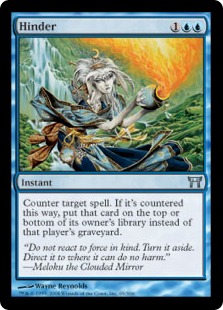
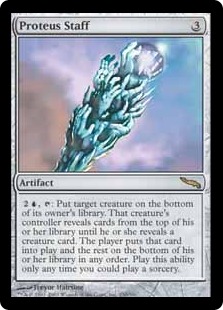
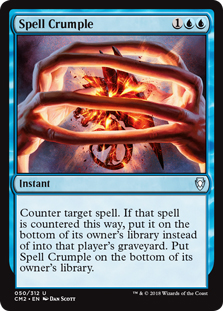
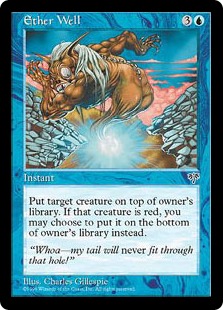
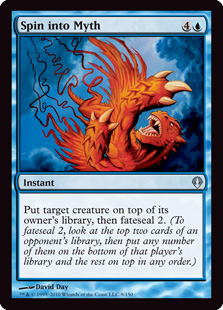
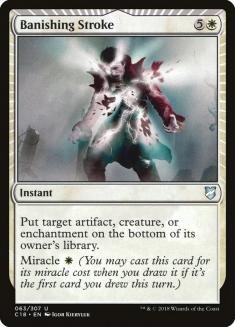
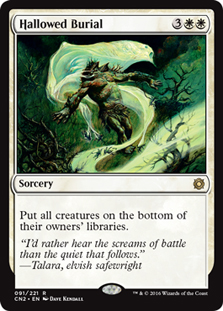
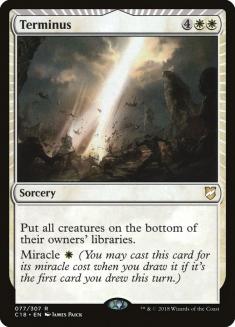
I thought I would provide my own commentary on the rules change as a long-time fan and ambassador of the format who is not involved in the Rules Committee.
The Sky Is Probably Not Falling
Like many people, I was really surprised to hear about this change. It was not something I was expecting and the possibility of it happening wasn’t at all on my radar. What I didn’t expect was the sheer volume of negativity that erupted across social media about this change. Sure, any change to Magic will prompt negative reaction, and people are much more likely to rush to their keyboards when they’re angry than they will when they are happy or neutral. People love their game and are passionate about it, and that’s a good thing. But the volume of anger and vitriol I read was shocking. What I strongly suggest to those who are mad about this change to take a few days to cool off and consider that this change could very well be net good for the format. Whether you are a fan of the Rules Committee or a skeptic, you cannot deny that Commander has grown by leaps and bounds as a format and has become more popular year by year. That’s not a happy accident, it’s the result of some really smart people who love the format as much if not more than we do and who carefully and thoughtfully attend to it. I know they deliberated over this change, worked through the implications, and decided this would be a net positive improvement to the format. Sure, there is a chance this might ultimately be a mistake, but I think they have earned the right for us to consider this could very well be a change for the better.
This Change Makes Sense
Building and playing our Commander decks is an intensely personalized experience, and sometimes it’s hard not to just see things through our own individualized perspective. But step out of your shoes for a minute and slip on those of a player who’s new to the format. Consider what it is that’s cool about Commander from their point of view. It’s right there in the name — this format is all about your Commander! The rules are set up so that the gameplay is highly randomized: hundred-card decks with only a single copy of each card allowed (outside of basic lands) makes for a lot of variability of game play, which is a huge part of its appeal. But what sets Commander apart from other singleton formats is that you always have access to your Commander. Your choice of Commander really sets the tone and flavor for the rest of your deck; its color identity determines the colors you can play, and your Commander is the one card you can count on being able to play when you have the mana to do so. This is the tension that makes the format so very cool — the sheer chaos of the 99 singletons against the consistent baseline of your Commander.
Special rules were created to ensure that your Commander deck is indeed all about your Commander. You start the game with your Commander card in the Command Zone, and whenever you would be able to cast your Commander from your hand you may do so from the Command Zone. Of course, creatures die, get exiled and Counterspelled, so there are also rules dictating that whenever Commander would go to the graveyard or be put into exile you may instead put the card back into the Command Zone where you can play it again, but this time with a “tax” of two mana for each time you cast it from the Command Zone past the first. You should be able to access your Commander throughout the game, yes, but there must also be some sort of real cost for losing it from the battlefield.
If you agree that it makes sense in this format that your Commander should possess a “get out of jail” card for the graveyard or exile zones, it is not unreasonable to think that your Commander should get the same sort of immunity to being put in other play zones. We’re used to it the way that it was, of course, since it has been that way since the format’s inception – but from an external perspective it follows logically that you might similarly have some recourse to your Commander ending up someplace you didn’t want them to be, like your hand or in your deck. A lot of newer players make the assumption that this is actually the case and are rudely shaken of this notion the first time their Commander gets Hindered to the bottom of their library. If they are not playing tutors or ways to shuffle their library, they literally will not see their Commander for the rest of the game. That play experience very much runs counter to the theme of the format, which really boils down to this simple truism: given enough time and mana, you should always be able to eventually play your Commander. One card shouldn’t be able to permanently answer someone’s Commander for the entire game. Tuck effects were always the “loophole” players could use to get around the way Commander games are supposed to play out, and aside from all the ramifications of this change it’s clear that closing that loophole makes the Commander rules cleaner and more intuitive to those who aren’t used to the tuck rule thanks to long experience playing it that way.
The Opportunity Cost Of Tuck
If you’ve built any Commander decks from scratch, you no doubt know that a hundred cards are never enough even in a singleton format. If you’re like me, you’ll often find your initial deck sketch bursting at the seams with seventy or eighty cards you absolutely, positively want to put in the deck – not including the lands, of course we need those too – and you’re faced with making hard cuts. Since the heart of the Commander format is being able to count on your Commander if you want to, a good number of your cards are likely to be chosen with that game state in mind. Sure, your deck should be able to reasonably function without your Commander in case you get stalled on your mana development, or your Commander racks up too high of a Commander tax, but in general you should be able to build your deck with the expectation that your Commander – and other people’s Commanders – will be played sometimes.
With tuck effects around, if you build your deck around your Commander you need to make room for cards to help protect against your Commander getting tucked away and gone through the end of the game. This will often include ways to sacrifice a creature in response to a tuck effect, but can also include tutors that can go find the card from your deck. I remember when someone mentioned using Gamble for that very reason to help find your red Commander after it had been tucked: even if it gets randomly discarded by Gamble, you can then choose to put it into the Command Zone rather than the graveyard. I’ve also been known to run Cellar Door as an anti-tuck measure. Both Gamble and Cellar Door are sub-par cards that are taking up slots for much better cards that I want to put in the deck to craft epic stories around, and they’re only there to play around this incredibly feel-bad experience that had also, unfortunately, become incredibly common.
Not only are your anti-tuck measures costing you spell slots, but putting your own tuck effects into your deck in case you run across broken Commanders also has an opportunity cost. Consider this for example: suppose you’re in an epic five-player battle where no one brought any broken Commanders. One of the players is a relative newbie to the format and has been a bit shy on mana. They’re kind of glum because they haven’t had a chance to even cast their Rith, the Awakener yet. Finally they draws their sixth land and excitedly taps out to cast Rith. Trouble is, after brawling with some of the more experienced players around, you’ve got nothing to block fliers and you’re at six life. The only card in your hand is Hallowed Burial, a card you’re playing over Rout because sometimes you play against broken Commanders and you feel you need that tuck effect. So you have to face a difficult choice with outside-the-game social costs: either leave yourself vulnerable to dying through the air when Rith attacks, or cast that Hallowed Burial and crush this newbie’s hopes of ever seeing Rith again that game. Casting Rout leaves no feel-bads because it buys you the time you need to set up your defenses (or win), and the newbie still has the hope of ripping two more lands and casting their Rith again.
The Loss Of Tuck As A Silver Bullet
Okay, so my understanding of the heart of the controversy regarding this decision is that it takes away a tool that many players use to keep abusive Commanders in check. Derevi, Empyrial Tactician gets brought up a lot since it’s immune to the Commander tax so no matter how many times you kill it, it will come back for 1GWU. I personally haven’t witnessed anyone’s unstoppable Derevi Commander deck, but with its triggered ability to untap permanents I can certainly imagine what one could look like. Perhaps someone in your local Commander group constantly plays a super-obnoxious Derevi deck that only tuck effects keep in check and now you’re justifiably worried that there’s going to be no stopping him with this new rule in effect. Here are some options:
- Find other silver bullets. Here’s the thing: there have been over 13,000 unique Magic cards printed since the game first came out, and Wizards of the Coast prints hundreds more every year. There are solutions to be had if you look hard enough. For Derevi I found a pretty good one: Pithing Needle. Pithing Needle is a flexible hate card that can be useful in just about any game of Commander, but play it and name Derevi and now the card will be limited by the Commander tax just like any other Commander. Sure, Pithing Needle isn’t a permanent solution to the Commander since presumably the Derevi player will have ways to destroy it in his deck, but as I mentioned above no one card should totally lock out a player from playing his Commander the entire game. Here’s another silver bullet: Torpor Orb, which will shut down Derevi’s comes-into-play triggered ability. There’s also the combat damage triggered ability… how many variants of Fog have been printed? Take a second look at Pacifism/Arrest variants like Darksteel Mutation and Song of the Dryads. Yes, they aren’t necessarily going to be permanent solutions to problematic Commanders, but then again, there shouldn’t be permanent solutions to Commanders in Commander.
- Make it clear who’s the Archenemy this game. People have been building and playing unfun Commander decks since the earliest days of EDH and the best way to handle those people is often to just eliminate that player first. Make it clear that if they insist on playing their broken deck they can expect to be facing down every other player at the table working together to kill them so they can get back to playing a fun game of Commander. Put the bulls-eye on that guy and take ’em out. Even the nastiest decks will usually crumble if the resources of three or four players are brought to bear exclusively against them.
- Combo harder. If the jerk with the Derevi deck keeps playing his unfun Derevi deck, then build your own Derevi deck or something else that is even more unfun and have it with you when he breaks his out. Give him a taste of his own medicine. I have found that most people who come to Commander with Spike sensibilities soften over time and grow bored with their killer combo Commander deck winning the same way over and over again, especially if there are no prizes on the line, so hopefully their taste for unfun decks will wane.
- Stop playing with the jerk. Commander is about having fun. If nobody is having fun but the Derevi player, every time he sits down with you, stand up! This obviously isn’t the ideal solution but it applies to any social situation — if someone is unpleasant to be around, you can always just stop being around them. If you’re worried the Commander pods at big Magic tournaments are going to be filled with these sorts of decks and you’d rather have a casual, laid-back game of Commander, wander around the tables and you’re sure to find a group of people who are just playing for fun — that’s what I usually do rather than play in the competitive pods.
So for those of you who are on the fence about this rules change, I hope that this might have given you another perspective on it and see that it’s very likely that, on the balance, this is a positive change for Commander. I feel confident that, six months from now, we won’t even miss the “good old days” when we could tuck Commanders… and a year from now, it’ll seem a little silly that the rules used to allow it. No one still stacks damage, after all, or asks whether the interrupt window has closed and if they can resolve their batches yet.
What do you think? Sound off in the forums!
Standard Deck: Bant Double Dragon
Okay, so about that new Dragon deck… It all started with Dragonlord Dromoka.
Wow, now this is a heckuva Baneslayer Angel, right? I know a lot of people are skeptical about how good Dromoka will be since she dies to a whole bunch of very-common spells that can target her – Hero’s Downfall, Hidden Dragonslayer, Valorous Stance, Murderous Cut, Elspeth, Sun’s Champion, Chained to the Rocks, Radiant Purge, Abzan Charm, Silence the Believers. Fortunately for us, at least two of the best new removal spells – Ultimate Price and Roast – cannot touch her at all. If Dragonlord Dromoka is one of the few win conditions in your deck then yes, it is rather dangerous to rely on her to carry the day. But if she’s one of many great creatures in your deck, it’s very possible that you can overload your opponent’s removal, especially since Dromoka will only come out at the very top of your mana curve. I could easily see her topping off a deck chock full of must-kill creatures like Fleecemane Lion, Courser of Kruphix, Polukranos, World-Eater, and Wingmate Roc.
One subtle implication of her Abeyance-like ability is that she forces that removal spell to be used on your opponent’s turn. Often an opponent will hold up mana for a removal spell in the hopes of hitting the biggest threat at the end of your turn, then untapping and using their mana to make a big play. Dromoka shuts that plan down, or at the very least they can’t kill Dromoka herself and they’d need to fire off the removal spell while Dromoka is still on the stack. Once Dromoka resolves, all those sweet instant-speed removal spells effectively become sorceries until she is dealt with.
Of course, what would be super-sweet is if you can protect Dromoka from sorcery-speed removal… then you really could ride her to victory five points of lifelink damage at a time. The problem, of course, is that six mana is a lot, and it’s unlikely you’re going to have even more mana available to protect her the turn you cast her.
Unless…
Man, what a blowout, right? You tap out for Dromoka, your opponent fidgets while she’s on the stack and they have three mana open, then nods and waits for you to finish your turn. On their turn they tap half their mana to cast Hero’s Downfall on Dromoka, and you tap Dromoka and your Fleecemane Lion to convoke Ephemeral Shields, making Dromoka indestructible until the end of turn. Yeah!
Then Dragonlord Ojutai came to mind. I wrote up a sweet Dragonlord Ojutai Commander deck the other day, and did a lot of thinking about how to best use him, especially since attacking with him lets his shields down. Dragonlord Ojutai costs five mana, and Dragonlord Dromoka can come down the turn after you’ve cast Ojutai and shut down any opportunity they might have to hit Ojutai when he’s tapped and attacking. Sure, once you pass the turn your opponent could kill Ojutai… but at least you’ve already replaced Ojutai with a card and there’s now another giant threat they’d have to answer besides! How do you really choose between killing a giant Baneslayer Angel or a giant Impulsing-Thieving Magpie?
Hm, there might be a deck here! Below is what I want to test out once I get the cards I need still to put it together:
I like the mana curve of turn-three Frontier Siege (set to Dragons), turn-four Dragonlord Ojutai (fighting something it can kill without dying itself), turn-five Dragonlord Dromoka (fighting something it can kill without dying itself, hey – lifelink boost!), attack with Ojutai and get that free Anticipate too. Assuming you’ve killed their first couple of creatures fighting with Frontier Siege, you now force them to choose between playing a removal spell for one of your dragons or playing a creature to get back on the board.
Of course, the huge problem with building your deck around Dragonlord Ojutai and Dragonlord Dromoka is that both of them are white, which makes dealing with Stormbreath Dragon and its protection ability a huge pain in the butt. So much so that I’ll probably put four copies of Plummet in the sideboard, but for the maindeck I’m hoping a few copies of Hornet Queen (which Ojutai can help dig up) along with Dromoka’s lifelink will give us a fighting chance.
I like that Kiora’s Follower functions as both mana and a way to untap Dragonlord Ojutai to turn hexproof back on in response to targeted removal.
So, do you think this sort of deck might have some legs going forward? What changes would you make to it?
New to Commander?
If you’re just curious about the format, building your first deck, or trying to take your Commander deck up a notch, here are some handy links:
-
Commander Primer Part 1
(Why play Commander? Rules Overview, Picking your Commander) -
Commander Primer Part 2
(Mana Requirements, Randomness, Card Advantage) -
Commander Primer Part 3
(Power vs. Synergy, Griefing, Staples, Building a Doran Deck) -
Commander Starter Kits 1
(kick start your allied two-color decks for $25) -
Commander Starter Kits 2
(kick start your enemy two-color decks for $25) -
Commander Starter Kits 3
(kick start your shard three-color decks for $25)
Commander write-ups I’ve done
(and links to decklists):
• Titania, Protector of Argoth (Titania’s Land and Elemental Exchange)
• Reaper King (All About VILLAINOUS WEALTH)
• Feldon of the Third Path (She Will Come Back to Me)
• Sidisi, Brood Tyrant (Calling Up Ghouls with Sidisi)
• Zurgo Helmsmasher (Two Times the Smashing)
• Anafenza, the Foremost (Anafenza and Your Restless Dead)
• Narset, Enlightened Master (The New Voltron Overlord)
• Surrak Dragonclaw (The Art of Punching Bears)
• Avacyn, Guardian Angel; Ob Nixilis, Unshackled; Sliver Hivelord (Commander Catchup, Part 3)
• Keranos, God of Storms; Marchesa, the Black Rose; Muzzio, Visonary Architect (Commander Catchup, Part 2)
• Athreos, God of Passage; Kruphix, God of Horizons; Iroas, God of Victory (Commander Catchup, Journey into Nyx Edition)
• Kurkesh, Onakke Ancient (Ghost in the Machines)
• Jalira, Master Polymorphist (JaliraPOW!)
• Mishra, Artificer Prodigy (Possibility Storm Shenanigans)
• Yisan, the Wanderer Bard (All-in Yisan)
• Selvala, Explorer Returned (Everyone Draws Lots!)
• Grenzo, Dungeon Warden (Cleaning Out the Cellar)
• Karona, False God (God Pack)
• Doran, the Siege Tower (All My Faves in One Deck!)
• Karador, Ghost Chieftain (my Magic Online deck)
• Karador, Ghost Chieftain (Shadowborn Apostles & Demons)
• King Macar, the Gold-Cursed (GREED!)
• Niv-Mizzet, the Firemind ( Chuck’s somewhat vicious deck)
• Roon of the Hidden Realm (Mean Roon)
• Skeleton Ship (Fun with -1/-1 counters)
• Vorel of the Hull Clade (Never Trust the Simic)
• Anax and Cymede (Heroic Co-Commanders)
• Aurelia, the Warleader ( plus Hellkite Tyrant shenanigans)
• Borborygmos Enraged (69 land deck)
• Bruna, Light of Alabaster (Aura-centric Voltron)
• Damia, Sage of Stone ( Ice Cauldron shenanigans)
• Emmara Tandris (No Damage Tokens)
• Gahiji, Honored One (Enchantment Ga-hijinks)
• Geist of Saint Traft (Voltron-ish)
• Ghave, Guru of Spores ( Melira Combo)
• Glissa Sunseeker (death to artifacts!)
• Glissa, the Traitor ( undying artifacts!)
• Grimgrin, Corpse-Born (Necrotic Ooze Combo)
• Jeleva, Nephalia’s Scourge ( Suspension of Disbelief)
• Johan (Cat Breath of the Infinite)
• Jor Kadeen, the Prevailer (replacing Brion Stoutarm in Mo’ Myrs)
• Karona, False God (Vows of the False God)
• Lord of Tresserhorn (ZOMBIES!)
• Marath, Will of the Wild ( Wild About +1/+1 Counters)
• Melira, Sylvok Outcast ( combo killa)
• Mirko Vosk, Mind Drinker ( Outside My Comfort Zone with Milling
)
• Nefarox, Overlord of Grixis (evil and Spike-ish)
• Nicol Bolas (Kicking it Old School)
• Nylea, God of the Hunt ( Devoted to Green)
• Oloro, Ageless Ascetic (Life Gain)
• Oona, Queen of the Fae (by reader request)
• Phage the Untouchable ( actually casting Phage from Command Zone!)
• Polukranos, World Eater (Monstrous!)
-
• Progenitus (
Fist of Suns and Bringers
)
• Reaper King (Taking Advantage of the new Legend Rules)
• Riku of Two Reflections (
steal all permanents with Deadeye Navigator + Zealous Conscripts
)
• Roon of the Hidden Realm ( Strolling Through Value Town)
• Ruhan of the Fomori (lots of equipment and infinite attack steps)
• Savra, Queen of the Golgari ( Demons)
• Shattergang Brothers (Breaking Boards)
• Sigarda, Host of Herons ( Equipment-centric Voltron)
• Skullbriar, the Walking Grave ( how big can it get?)
• Sliver Overlord (Featuring the new M14 Slivers!)
• Thelon of Havenwood ( Campfire Spores)
• Varolz, the Scar-Striped (scavenging goodness)
• Vorosh, the Hunter ( proliferaTION)

